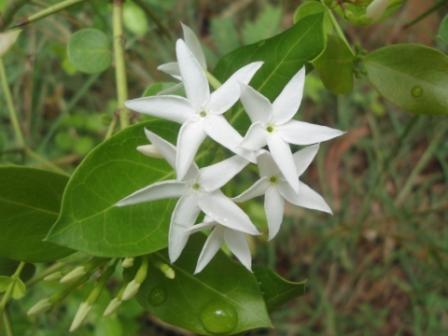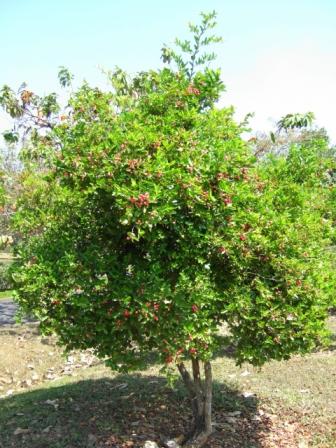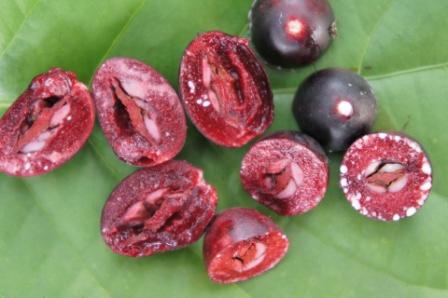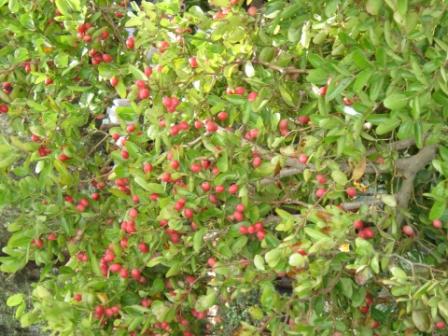Growth : Medium
Height : 6 m
Natural Regeneration :
Natural Regeneration
- It is propagated by seed.
Artificial Regeneration
- Propagted by cuttings and Air layering.
Seed collection Storage
- Seeds are collected in the month of April-June.
- The mature fruits are collectd form the tree by lopping or ground collection.
- Thee seeds are extracted from the fruits by drying. The seeds can be stored up to 1 month.
Pretreatment
- Not necessary. If cuttings were pre-treated with indolebutyric acid at 500 ppm in 50% alcohol.
Nursery Technique
- The seed is best sown in bed as soon as it is ripe, after thoroughly rinsing it.
- Germination usually takes place within 2 - 3 weeks at 13°c.
- The seed is usually polyembrionic, two or more seedlings arise from each seed and they are genetically identical to the parent but they do not usually carry any virus that might be present in the parent plant.
- Layering should be done in October.20% of hardwood cuttings from trimmed hedges have rooted in November but not when planted earlier.
- Cuttings from nursery stock gave best results: 10% rooted in late September; 20% in early October; 30% in late October; and 50% in early November.
Plantation technique :
- Pits of 60 cm x 60cm x 60cm size are dug and filled with organic manure and soil in a 1:2 ratio.
- The planting distance for fence/ hedge should be 1-1.5 m, requiring 300-400 plants for planting along the boundary of one hectare field.
Care & Disease Control :
Pruning
- Regular plantations of Karonda can be trained on single or double stem.
- Therefore additional unwanted shoots or laterals are removed from time-to-time to give the plant desired shape. Suckers arising from ground and diseased dried twigs should be removed.
Irrigation
- Water requirement of Karonda is very low.
- Plantation once established does not need much water.
- However, if there is no rain during the development of fruit, one irrigation may be given.
Major pests :
- Nursery plants are probably prone to the same pests that attack young carissas.
- Fungus diseases recorded on the karanda in Florida are algal leaf spot and green scurf caused by Cephaleuros virescens, twig dieback from Diplodia natalensis and stem canker induced by Dithiorella sp.
Irrigation :
For proper growth and survival it is necessary to give one or two waterings after planting. This is specifically required in arid regions. Irrigation after planting is not a prerequisite in areas having sufficient soil moisture and precipitation. Higher survival rate and better rate of growth is reported when soil and water conservation measures are also adopted
Recommended Harvest :
4-5 years.
Yield :
Plants take about 3 years to come into bearing from seed, 1 - 3 years from cuttings
Agro Forestory :
The plant responds well to trimming and is frequently grown as a hedge. With its sharp spines, it makes an excellent barrier
Major uses :
- The wood is hard and is used to make small utensils.
- It is used for making household furniture and for turning.
- The white latex is found in the plants. The roots are used as as insect repellents.
Agroforestry :
- The plant responds well to trimming and is frequently grow as possible as a hedge.
Other uses :
- The fruits are astringent also used as a remedy for billousness.
- A leaf decotition is used against fever and diahrroea.
- The roots are serve as a stomatichic, vermifuge and remedy for itches.





